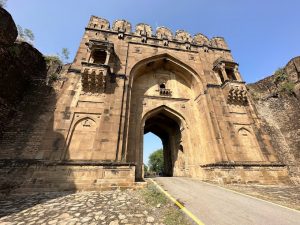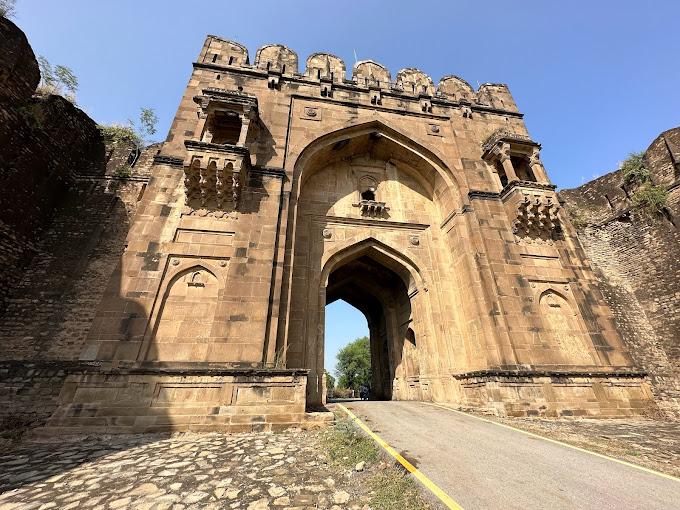Exploring Pakistan’s rich tapestry of history, one cannot overlook the monumental Rohtas Fort, a fortress that stands not just as a testament to architectural brilliance but also as a sentinel of the myriad stories and cultural amalgamations that have transpired over centuries. This article seeks to delve deeper into the annals of history, inviting tourists and history enthusiasts alike to embark on a journey through time, exploring Rohtas Fort and its surrounding historical sites with a more detailed lens.
Nestled in the heart of Punjab, Pakistan, the majestic Rohtas Fort is not just an architectural marvel but a gateway to the rich history and heritage of the region. This extensive article aims to guide tourists looking to explore the historical splendors of Pakistan, with a special focus on Rohtas Fort and its surrounding historical sites. Perfect for history aficionados and adventure seekers alike, this journey through time will unveil the stories, legends, and architectural achievements of a bygone era.
Introduction to Rohtas Fort: A UNESCO World Heritage Site
Rohtas Fort, a symbol of strength and resilience, is located near the city of Dina in Jhelum District of Punjab, Pakistan. Declared a UNESCO World Heritage Site in 1997, the fort is an exceptional example of early Muslim military architecture in Central and South Asia. Built in the 16th century by Sher Shah Suri, a formidable ruler who briefly overtook the Mughal Empire, the fort served as a strategic fortress to control the Ghakkar tribes of northern Punjab and as a deterrent against Mughal reclamation of India.
Architectural Marvels of Rohtas
The fort spans over an area of approximately 70 hectares, encircled by massive walls that extend up to 4 kilometers in length, fortified by bastions, and accessed through monumental gateways. The most notable among these gateways is the Sohail Gate, which combines both decorative and defensive features, showcasing intricate stone carvings and battlements. Inside, the fort encompasses several palaces, mosques, and administrative buildings, each narrating a unique story of its era.
Rohtas Fort: A Strategic Masterpiece of the 16th Century
The Genesis of Rohtas
The construction of Rohtas Fort was commissioned in 1541 by Sher Shah Suri, following his victory over the Mughal Emperor Humayun, with the strategic intent to prevent the return of the Mughals to the Indian subcontinent. Situated on a hill overlooking a key trade route, the fort was ingeniously designed to serve both military and administrative purposes, making it an indomitable stronghold of its time.
Architectural Ingenuity
Rohtas Fort is an exemplary showcase of the fusion between Persian and subcontinental architectural styles, reflecting Sher Shah Suri’s vision of creating a fort that was as beautiful as it was functional. Its walls, stretching over 4 kilometers, are interspersed with 68 bastions for defense and 12 gates, each serving a specific purpose and named accordingly, such as the Kabuli Gate, facing towards Kabul, and the Shahi Gate, believed to be used by royalty.
Inside the fort, the Haveli of Man Singh is a notable structure, built later by the Mughals, showcasing the aesthetic sensibilities of the time with its intricate designs and the use of red sandstone. The Shah Chandwali Gate, leading to a mosque of the same name, is another architectural marvel, offering insights into the spiritual life within the fort.
The Decline and Preservation
Despite its initial role as a military stronghold, the fort gradually lost its strategic importance and fell into neglect. It wasn’t until the 20th century that efforts were made to preserve Rohtas Fort as a historical site, culminating in its recognition as a UNESCO World Heritage Site in 1997, ensuring its conservation and continued awe and inspiration for generations to come.
The Surrounding Historical Tapestry
1. Tilla Jogian: The spiritual essence of Tilla Jogian adds a diverse layer to the historical landscape. It stands as a reminder of the region’s religious pluralism and the centuries-old traditions of asceticism practiced here, offering a panoramic view that connects the physical and spiritual realms.
3. Katas Raj Temples: The Katas Raj Temples are a crucial link to the Hindu past of the region. The temples, with their storied history tied to the Mahabharata and the Pandava brothers, reflect the deep-rooted cultural and religious syncretism, making them a site of pilgrimage and historical curiosity.
4. Hiran Minar: Reflecting the personal and aesthetic inclinations of Emperor Jahangir, Hiran Minar is a unique memorial that blends love, loss, and architectural innovation. It symbolizes the human aspect of the Mughal rulers, often overshadowed by their imperial conquests and administrative achievements.
5. Mangla Fort: Nestled in the modern embrace of the Mangla Dam, one of the world’s largest dams, lies the remnants of Mangla Fort, a historical site that whispers tales of valor, strategic importance, and the inevitable march of progress. Situated near the city of Mirpur in Azad Jammu and Kashmir, Pakistan, Mangla Fort presents a fascinating juxtaposition of ancient heritage against the backdrop of a monumental feat of modern engineering.
Unveiling the Layers of History
The history of Rohtas Fort and its environs is a microcosm of the broader historical currents that have shaped the Indian subcontinent. From the strategic military tactics of Sher Shah Suri to the Mughal penchant for architectural beauty and the spiritual traditions of ancient religions, these sites offer a comprehensive look into the past.
The Strategic Importance of Rohtas
Rohtas served not just as a defense mechanism but also as a symbol of power and control. It was a statement of Sher Shah Suri’s determination to establish his rule and leave a lasting legacy, a feat he achieved through the fort’s construction and his administrative reforms, which had a lasting impact on the region.
The Cultural Confluence
The diverse architectural styles and religious sites around Rohtas Fort speak volumes about the confluence of cultures in this region. It was a melting pot of Hindu, Muslim, and later, Sikh influences, each leaving an indelible mark on the cultural fabric of the area.
A Timeless Journey for the Modern Traveler
Visiting Rohtas Fort and its surrounding sites is not merely a trip into the past; it is an exploration of the continuity of human civilization, of resilience, and the eternal quest for beauty and spiritual fulfillment. It’s a journey that offers not just historical insights but also a reflection on the universality of human experiences across time.
Conclusion
Rohtas Fort and its neighboring historical treasures are a testament to the rich and varied heritage of Pakistan. They stand as silent witnesses to the ebb and flow of empires, the confluence of cultures, and the timeless quest for meaning and beauty. For those looking to explore the depths of history, Rohtas Fort and its surroundings offer an unparalleled journey through time, inviting explorers to immerse themselves in the stories of yesteryears, amidst the breathtaking landscapes of Pakistan.
Rohtas Fort
Mangla Fort
Discover Top 20 Places to Visit in Islamabad and Surroundings: A Traveler’s Ultimate Guide

